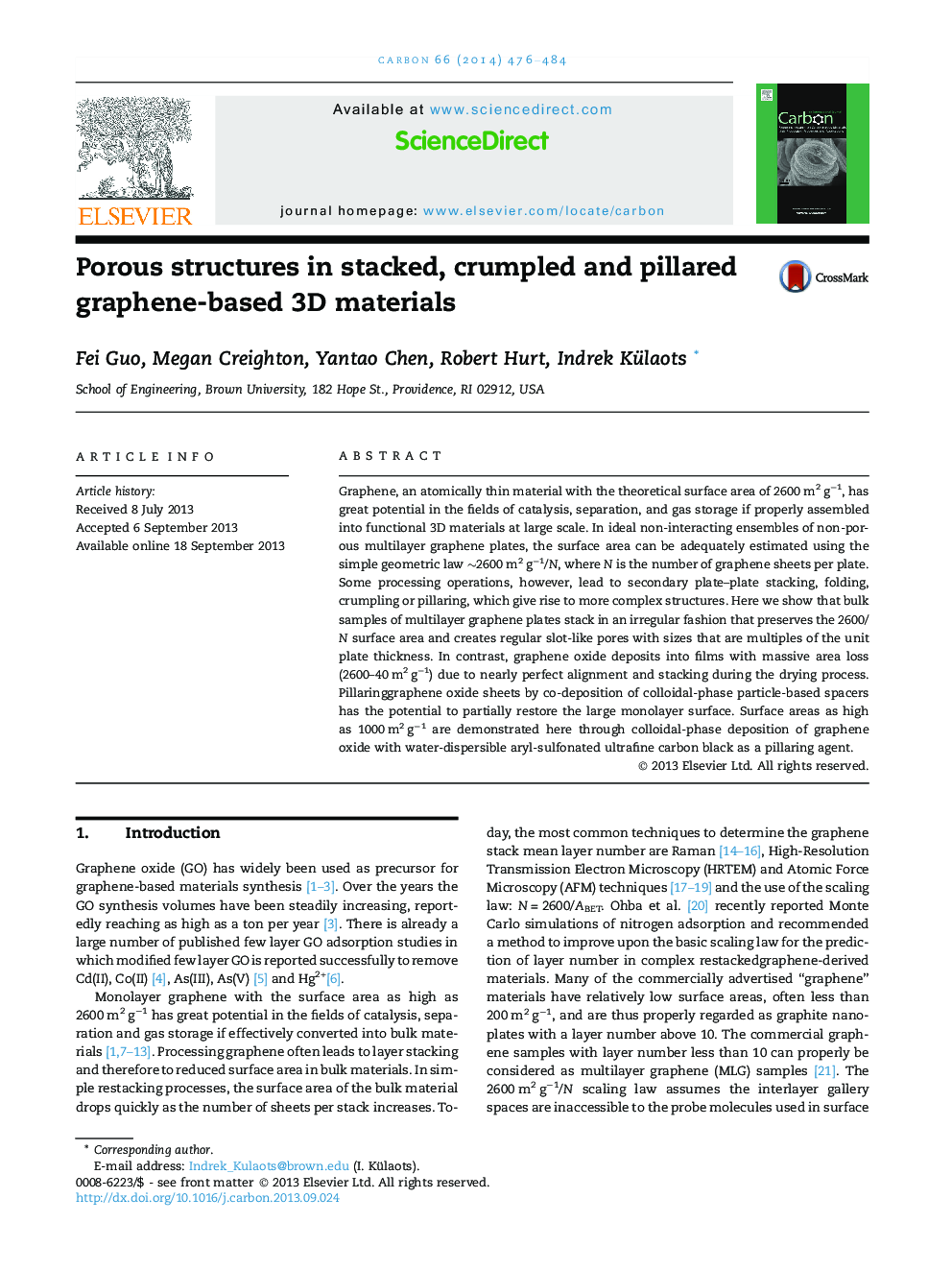| Article ID | Journal | Published Year | Pages | File Type |
|---|---|---|---|---|
| 7855673 | Carbon | 2014 | 9 Pages |
Abstract
Graphene, an atomically thin material with the theoretical surface area of 2600Â m2Â gâ1, has great potential in the fields of catalysis, separation, and gas storage if properly assembled into functional 3D materials at large scale. In ideal non-interacting ensembles of non-porous multilayer graphene plates, the surface area can be adequately estimated using the simple geometric law â¼2600 m2Â gâ1/N, where N is the number of graphene sheets per plate. Some processing operations, however, lead to secondary plate-plate stacking, folding, crumpling or pillaring, which give rise to more complex structures. Here we show that bulk samples of multilayer graphene plates stack in an irregular fashion that preserves the 2600/N surface area and creates regular slot-like pores with sizes that are multiples of the unit plate thickness. In contrast, graphene oxide deposits into films with massive area loss (2600-40Â m2Â gâ1) due to nearly perfect alignment and stacking during the drying process. Pillaring graphene oxide sheets by co-deposition of colloidal-phase particle-based spacers has the potential to partially restore the large monolayer surface. Surface areas as high as 1000Â m2Â gâ1 are demonstrated here through colloidal-phase deposition of graphene oxide with water-dispersible aryl-sulfonated ultrafine carbon black as a pillaring agent.
Related Topics
Physical Sciences and Engineering
Energy
Energy (General)
Authors
Fei Guo, Megan Creighton, Yantao Chen, Robert Hurt, Indrek Külaots,
